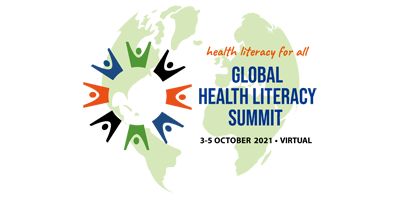Abstract Preview
Abstract
|
Title Does health literacy incorporate the concept of nutrition literacy? |
|
Type Poster Presentation Only |
|
Theme Global Health Literacy Summit 2021 |
|
Topic Nutrition health literacy |
Authors
|
Main Author Virginia Vettori1 |
|
Presenting Author Virginia Vettori1 |
|
Co-Author Chiara Lorini1 Heather D. Gibbs Vieri Lastrucci Giulia Di Pisa1 Alessia De Blasi1 Marisa Scocuzza Antonella Pellegrini Guglielmo Bonaccorsi1 |
Authors' Institution
|
Department / Institution / Country Department of Health Sciences / University of Florence / Italy (Italia)1 |
|
Abstract Content (abstracts should be written in Size 11 font, Arial font style) To date, there is no agreement around the relationship between the concept of health literacy (HL) and nutrition literacy (NL) in the literature. Some authors consider the two concepts overlapped; however, it was observed that traditional conceptualizations of HL overlooked the complexities of the set of skills, competencies, and knowledge required by NL. Few data related to individuals' level of NL are available, and Italian national data are even nearly absent. Undoubtedly, this gap prevents the full comprehension of the conceptual boundaries between HL and NL. We conducted an observational cross-sectional study to verify whether HL is associated with NL. Participants were asked to voluntarily answer an online survey. The questions included the Italian adapted version of the Nutrition Literacy Assessment Instrument (NLit-IT) and the HLS-EU-Q6 validated for the Italian population. Associations between the NLit-IT and HLS-EU-Q6 scores were assessed by computing correlation (Spearman’s Rho). Additionally, we evaluated association between NL level and adherence to the Mediterranean (Med) Diet and the reliability of the tool (by Cronbach’s alpha and intraclass correlation). A sample of N = 74 individuals (female, 56.8%; mean age, 38.8 years old (95% CI, 35.8-41.8; SD, 13.1) was considered for the data analysis. Data were analyzed using RStudio software. The mean score for HLS-EU-Q6 was 2.6 (95% CI, 2.5-2.7; SD, 0.48), and the mean score of NLit-IT was 49 (95% CI, 47.73-50.27; SD, 5.59), corresponding to a possibility of limited NL. It was not found a significant association between NL and HL levels (p-value > 0.5; Rho = -0.043); but NLit-IT score was shown to correlate with Med Diet (p-value < 0.5; Rho = 0.25) and demonstrated reliability (ρT = 0.78; 95% CI, 0.69–0.84; ICC = 0.68, 95% CI, 0.46–0.85). Although there may be some common grounds between HL and NL, our results suggest that they are -at least in part- distinct concepts. This finding is in line with international evidence suggesting that HL and NL have different skills and specific knowledge and that high levels of HL do not necessarily imply the same high levels of literacy in the field of nutrition. |
|
Other Topics Preferences(Maximum of two topics only and please note that the Program Committee reserves the right to decide on the final presentation format.) Oral presentation, Poster presentation |
Requires Audio or Video system for Presentation?: No
